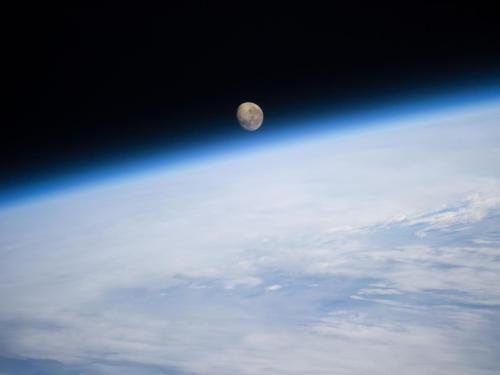
Discovering Mysterious Features On Saturn’s moon Dione
Oct 25, 2018
By Emily Martin
Getting to explore the moons of the outer solar system has become a pretty exciting area of study. Since the Galileo mission to Jupiter and the Cassini-Huygens mission to the Saturn system, the class of bodies called ‘ocean worlds’ (bodies in the solar system where we think there are oceans) have become a new topic in planetary science. The Galileo mission revealed Jupiter’s moon Europa had a liquid water ocean underneath it’s icy shell. The Cassini-Huygens mission similarly revealed a plume of liquid water emanating from Saturn’s tiny moon Enceladus. We now understand that many of these moons in the outer solar system once were, or may be ocean worlds today!
An illustration of how scientists envision ocean worlds, using one of Saturn's moons, Enceladus, as an example. Credit: NASA/JPL-Caltech
We think ocean worlds are important because we think liquid water is one of the key ingredients necessary for creating a habitable environment to support life. Combined with enough energy and the right chemistry, liquid water makes what scientists believe could be a place where life could survive, or even start.
Saturn’s moon Dione. Visible are Dione’s wispy terrains, which scientists believe formed recently. Linear Virgae are found to the east and west of the wispy terrains. Credit: NASA/JPL-Caltech/Space Science Institute
Saturn’s moon Dione is considered an ocean world. It is still not clear whether it currently has a global liquid water ocean, but we know that it had one at least recently. Along with my colleague Alex Patthoff at the Planetary Science Institute, I have been working on trying to understand Dione’s past or present ocean—as part of this work, we noticed these strange features on the surface that we have called ‘linear virgae’. According to the International Astronomical Union (the organization that is in charge of making sure things in space get named correctly) a ‘virga’ is a stripe or streak of color. (Virga is singular, virgae is plural.) These features on Dione are very long, very straight and linear over long distances and much brighter than the surrounding area.
We compared these features to all of the known processes in the solar system that can form long, bright, linear features in the relatively recent past. Linear virgae formed relatively recently, so they are some of the youngest features we see on Dione. We found that the distribution of linear virgae and their characteristics just don’t match with processes like the formation of crater rays, or fractures. The mechanism that best fit our observations was the deposition of material that came from somewhere outside of Dione and was being draped across Dione’s surface. There are a few different sources for this material including Saturn’s rings, a close encounter with a comet, or from Dione’s co-orbital moons (meaning moons of Saturn that share the same orbit around Saturn as Dione).
Whatever the source, the recent formation of linear virgae means there are some recent and interesting dynamical things going on in the Saturn system.
We think that the material forming Dione’s linear virgae is not native to Dione, so this could mean that whatever the source of the material is, it could be contributing some important chemistry to the Dione system that might make it more habitable. It also means that whatever the source, the recent formation of linear virgae means there are some recent and interesting dynamical things going on in the Saturn system. More modeling work needs to be done and Alex and I are going to continue this work to figure out whether we see linear virgae across the Saturn system or whether this is something that is going on locally around Dione.
Emily Martin is a research fellow in the Museum’s Center for Earth and Planetary Studies studying the ancient tectonic history of Saturn’s moon Enceladus. Her research includes planetary surface processes and tectonic deformation of icy bodies of the outer solar system. Read more about Martin’s findings about Dione.
Related Topics
You may also like
We rely on the generous support of donors, sponsors, members, and other benefactors to share the history and impact of aviation and spaceflight, educate the public, and inspire future generations. With your help, we can continue to preserve and safeguard the world’s most comprehensive collection of artifacts representing the great achievements of flight and space exploration.






